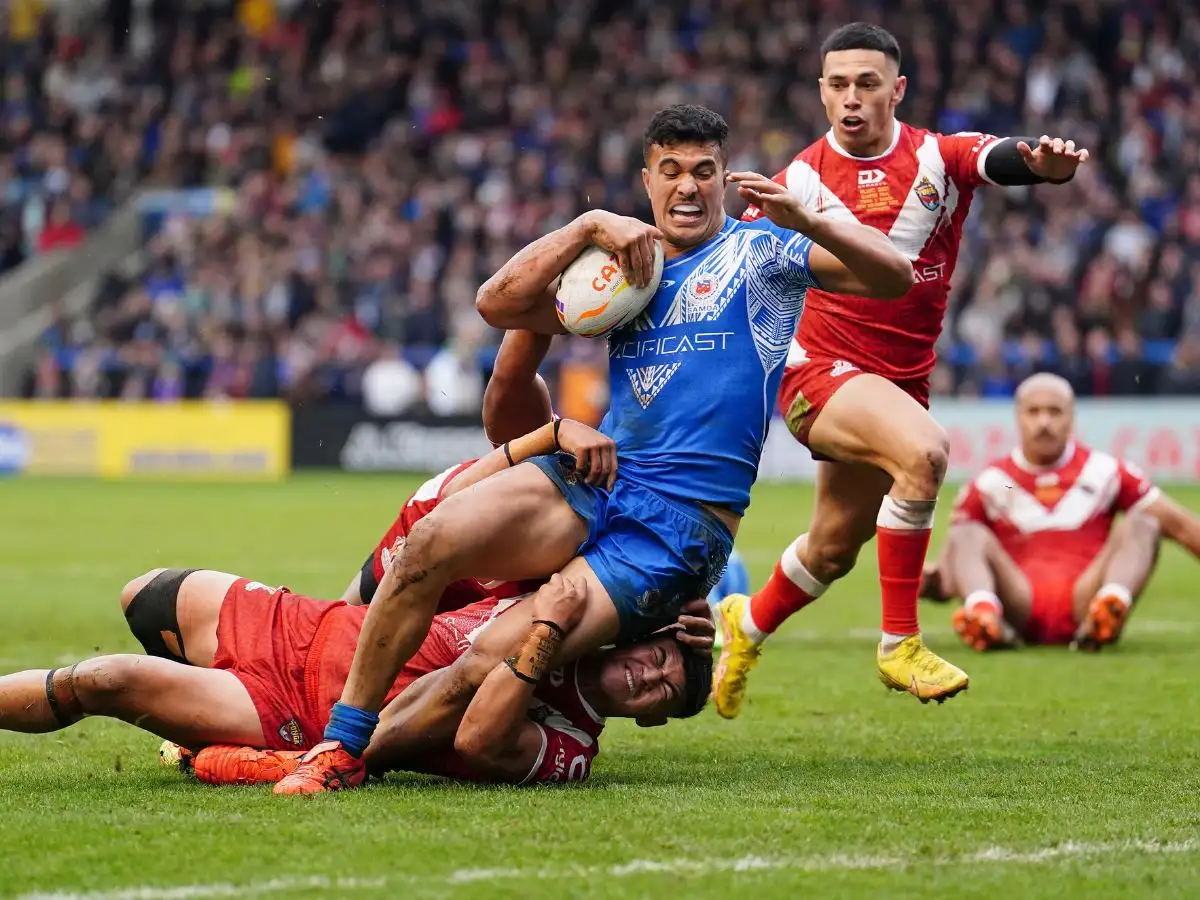World Cup star to make rugby union switch in eye-watering deal

Eddie Jones warned that he would raid the NRL when he took the Australia rugby union job after being sacked by England earlier this year.
NRL chiefs said they had no concerns about a talent drain to the 15-man code, but their position might change after arguably the biggest coup for rugby union since the likes of Wendell Sailor switched codes in the early 2000s.
Jones, who was England rugby union coach from 2015 to 2022, made clear of his intentions to look at NRL talent back in January.
He said: “We might be able to get some of the players who’ve left to play rugby league and wearing different colours, and get them in better colours.
“I think the chairman is pretty keen on pinching a few from the other side.”
Jones previously swooped to sign Sailor, Lote Tuqiri and Mat Rogers from the NRL, and all three featured in their 2003 Rugby (Union) World Cup final defeat to England.
Joseph Suaalii to switch codes at end of next season
Now, Sydney Roosters and Samoa full-back Joseph Suaalii will depart the NRL at the end of his current contract to take up a three-year deal with Rugby Australia and New South Wales Waratahs.
That will put him in prime position to represent the Wallabies against the British Lions in 2025 ahead of the Rugby (Union) World Cup in 2027.
Suaalii is still under contract with the Roosters until the end of 2024, and insists he is committed to the cause.
He said: “The Sydney Roosters have been great to me and my family since I got here and the club is always going to be a big part of me.
“There’s still a long way to go in my journey with the Roosters and my sole focus is on working hard every day to keep improving and performing my role for the team.”
Dreaming of Australia test jumper
Suaalii is no stranger to rugby union, having played it as a junior, and he featured for Australia schoolboys at Rugby Sevens.
There was much demand over his services, so much so that the NRL waived their age restriction to enable him to make his first grade debut before the age of 18.
He quickly established himself at the Roosters, earning a call up to the New South Wales State of Origin squad last season. But he his preferred spot at full-back is occupied by club captain James Tedesco.
Tedesco also stands in his way of playing full back for Australia, whereas now Suaalii will likely be a shoo-in to wear the Australia test jersey, albeit in a different code.
At the end of 2022, he played in all six games as Samoa reached the final of the Rugby League World Cup, losing to Australia.
The deal to switch codes is worth a reported $1.6m a year, which is being described as Rugby Australia’s biggest ever deal.
Although Rugby Australia keep details of their contracts quiet, they did tweet: “Welcome home Joseph.”
A statement later read: “Rugby Australia (RA) and the NSW Waratahs today announced that they have signed Joseph Suaalii from October 2024 until at least the end of 2027.
“Per RA policy, terms of the contract were not announced.
“Growing up in Penrith, Joseph Suaalii was a schoolboy rugby prodigy for The King’s School, representing the GPS 1st XV as well as NSW and Australian Schoolboys in rugby sevens. He also played rugby for Penrith RSL, Eastwood and Northern Barbarians.”
Focus remains on the Roosters
For now, Suaalii’s focus remains on the NRL and the Roosters, who will have the best part of two seasons to get the most out of him.
Roosters head coach Trent Robinson said: “Joseph has been transparent with the Club and we respect his decision.
“He has made his commitment to the Roosters club for the next year and a half crystal clear, and we’re excited about the path we’re on.”
The deal is being described Down Under as similar to the one that saw controversial centre Israel Folau switch to rugby union in 2013.
He would go on to play 73 times for the Wallabies, before returning to rugby league in Super League with Catalans.
Folau had initially left the NRL and Brisbane Broncos to play AFL, though only lasted two seasons.